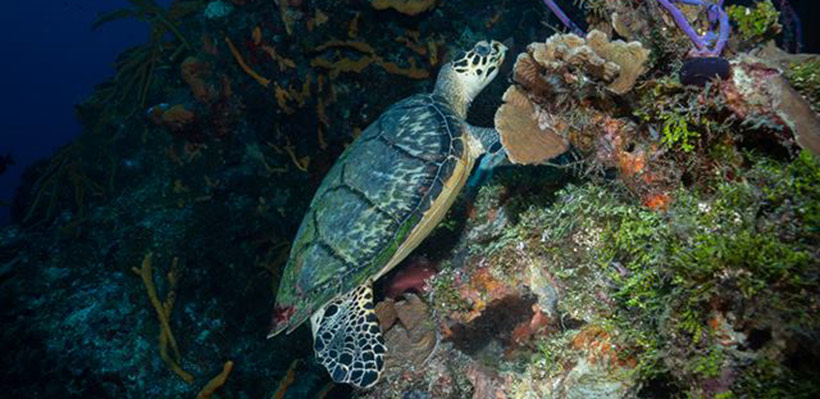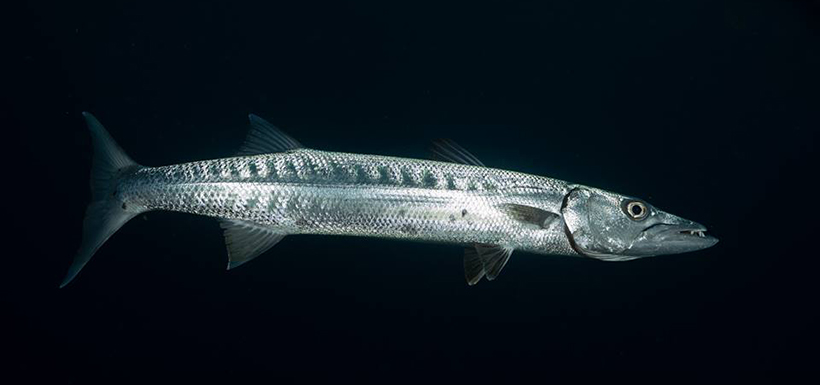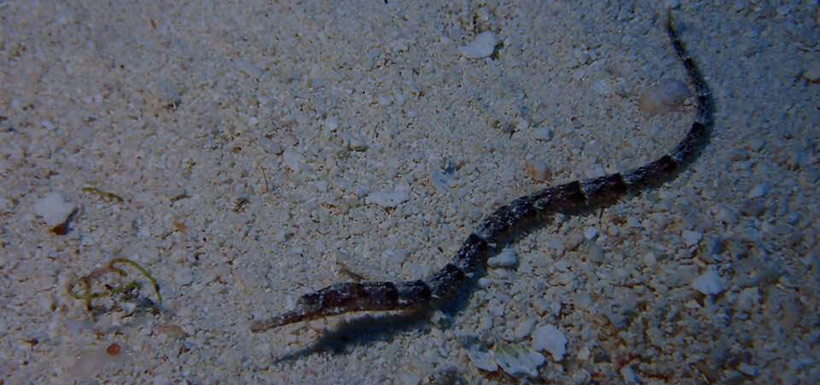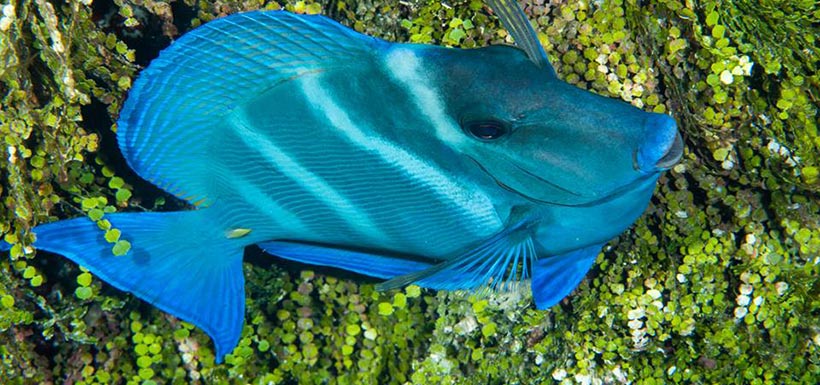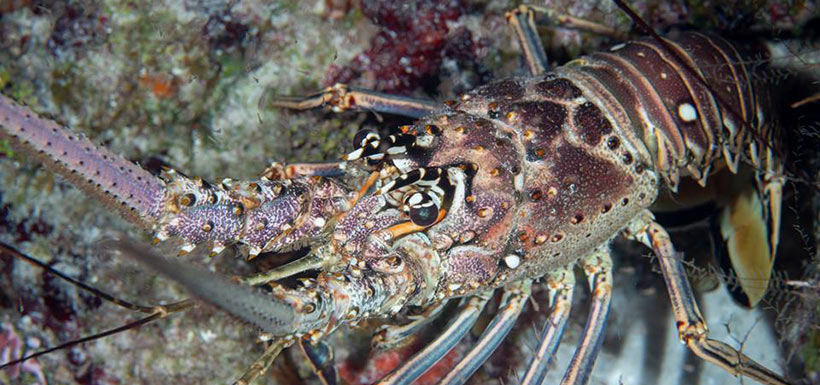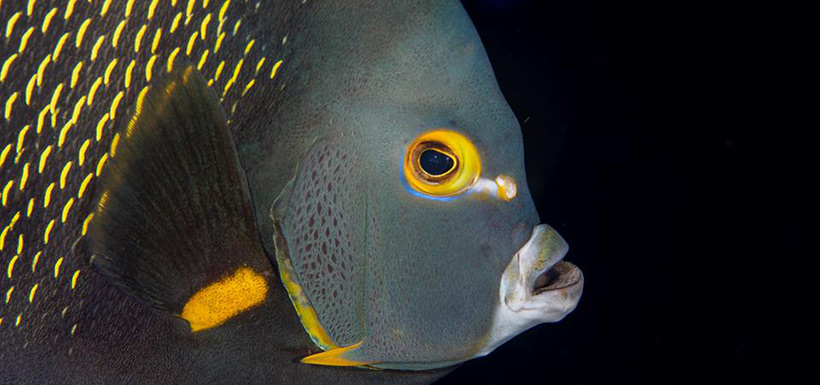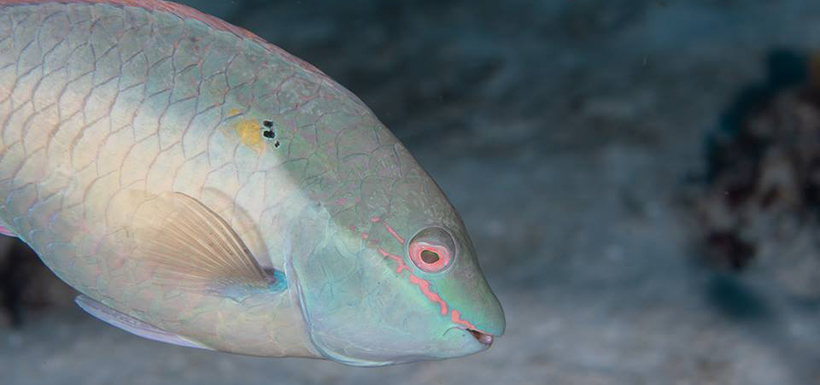A trip to dive for
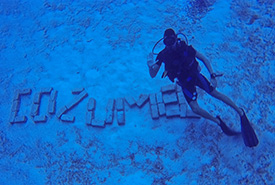
Diving next to the Cozumel sign (Photo by Stephen Mancuso)
Last November, I went to Cozumel, Mexico, on a scuba diving trip. This Caribbean island is a diver’s paradise and is renowned for its crystal clear, aqua-coloured waters, pristine coral reefs and drift diving, a type of scuba diving where underwater currents carry the diver along.
Diving for Life, a not-for-profit organization, organized the trip and rented out a dive resort for all 160 trip attendees. Each of us was assigned to a pod of 10 divers, who we dove with twice a day for the week. Local dive masters took us to different dive spots and led the dives, which lasted between 45 minutes and an hour. We dove to depths that ranged from 12 to 24 metres.
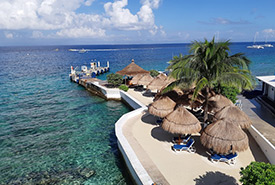
The resort beach and dive shop (Photo by Adam Hunter/NCC staff)
During my dives, I had exciting encounters with all kinds of animals, most of which I’d never seen in the wild. I wish I brought an underwater camera with me, but fortunately two divers who I met on the trip, Mike Jacobs (Instagram:@mikethesnowbean) and Beto Alvarez, allowed me to use their photos for this blog post.
Before my first dive, I was nervous because I hadn’t been diving in open water for over a year, but the feeling quickly dissipated during my descent into what seemed like another planet. My slow and deep breaths, combined with the inherent peacefulness of the underwater world, put me at ease.
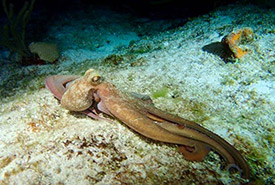
Octopus (Photo by Beto Alvarez)
As I was drifting along with the current, admiring the colourful coral reefs, sponges and tropical fish, I noticed one of the dive masters pointing to something on the ocean floor. I immediately swam toward him and recognized an octopus camouflaged on a piece of seaweed! This was my first time seeing an octopus in its natural habitat.
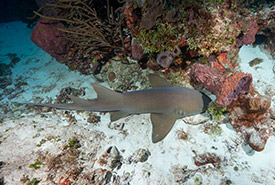
Nurse shark (Photo by Mike Jacobs)
On my third dive, I stumbled upon nurse sharks, docile fish that lack the sharp teeth that many other shark species have. They are often seen resting on the ocean floor, but I was fortunate enough to see them actually swimming around. Sharks are one of my favourite species, and this was my first time encountering one in the wild, so I was thrilled!
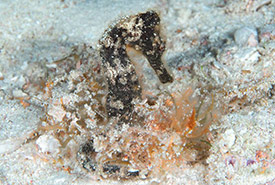
Seahorse (Photo by Mike Jacobs)
On my second-last dive, I was cruising along through the water when I saw a dive master pointing toward the ocean floor. I quickly kicked my way over to him. At first, I couldn’t figure out what he was pointing at, but when I descended to take a closer look, I noticed a tiny sea horse clinging to a piece of seaweed with its tail.
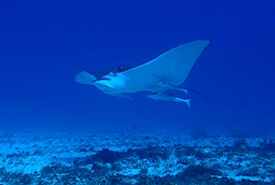
Giant spotted eagle ray (Photo by Beto Alvarez)
Later on during that dive, I was calmly drifting along when I noticed another diver gesturing at me to follow him. I immediately swam toward him, and to my astonishment saw a large, majestic creature that appeared to be flying in the water! At first glance, I thought it was a manta ray, but it was actually a giant spotted eagle ray. I’ve always wanted to dive with manta rays, and this was the next best thing. It was swimming against the current, so I had to do the same in order to get closer to it. When I got as close to the ray as I possibly could, I was so mesmerized by it that I didn’t realize how much energy and air I was using. I was out of breath after the encounter, so I rested and let the current carry me to the other divers.
These were just a few of many wildlife encounters I had. I also saw stingray, sea turtle, barracuda, triggerfish, pufferfish, pipefish, tang, spiny lobster, eel, angelfish and parrotfish, to name a few.
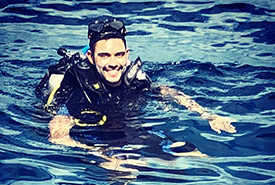
Floating in the sea after a dive (Photo by Matt Kaine)
On a few of the dives, I also swam through a few small, underwater caverns. Some of them were quite narrow, so I was nervous to enter them for fear of hitting my head or scraping my arm on fire coral. Luckily, I made it through these caverns unscathed and felt a sense of accomplishment and an adrenaline rush each time.
Overall, I had an incredible week of diving in Cozumel. Diving is my favourite way to immerse myself in nature, and I strongly encourage fellow nature lovers to dive into the world of scuba. Sadly, coral reefs around the world are in trouble. Experiencing them has helped me better appreciate the diversity of life on coral reefs and the need to protect it.

